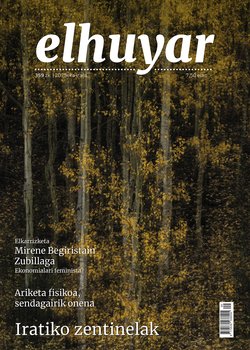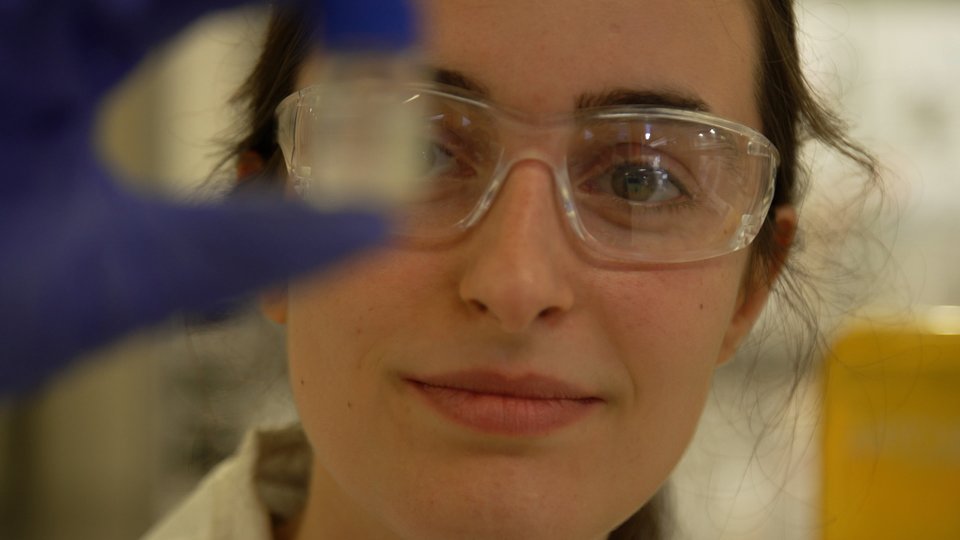The invasive plants
They are not of this land. Accidentally or intentionally, they appear due to the activity of the people, but they are naturalized. Today, they are able to reproduce in large numbers and at a high rate. We are talking about invasive plants, a global problem with a great ecological and economic impact. A team of experts from the University of the Basque Country has counted 478 foreign plants in Álava, Gipuzkoa and Bizkaia. Of these, 90 have become completely local, and 46 have invasive behavior. 21 of them are considered dangerous.
JON ZULAIKA; PROVINCIAL COUNCIL OF GIPUZKOA: The problem of invasive plants is a global one, because in the end it is an effect of globalization, a direct effect. So much merchandise, plants, transport flows from one to the other... In the end, it’s not just the products we ask for, the items we want. The plants are also expanding with it, affecting the whole world and, in addition, very badly. Today, the United Nations, FAO, the European Union... all agree that this problem of invasive plants is one of the problems of biodiversity, perhaps one of the most serious, (...).
There are many new plants. The catalogue, published this year by the Government, shows some four hundred outdoor plants that have been naturalized. I mean: not the ones we have in the house tiestos and that have to be renewed every year, but those who are able to live in nature on their own. What happens is that some are just able to live; they do not cause problems. Others are expanding, and among them some are expanding a lot. These are the invaders because they're spreading out uncontrollably. And depending on the impact, we can say that some have no effect or simply pass through, while others have the ability to transform the natural habitat, the environment.
IÑIGO SEGUROLA; LANDSCAPE DESIGNER: It is true that this problem comes from gardening, because gardening has always taken plants for its aesthetic value. It has originally brought them from places where there are similar climates. If I bring a plant from Japan - in Japan the climate is the same here - that plant will look for its possibilities here and, above all, a French landscape architect, Gilles Clément, finds them in this area known as the third landscape. For him, the third landscape is a landscape that has no use for us. This is the area where these plants appear. We don’t cultivate this rural land, and these plants find their opportunity to reproduce. What happens is that in these third landscapes are also our most important biotopes: For example, Urdaibai in the Basque Country.
The Urdaibai biosphere reserve is made up of several narrow valleys that lead to the Bay of Biscay. Its cliffs and beaches, forests and rivers preserve a great biodiversity. The reserve covers 22,000 hectares. The Common Bird Bull and the Swamp Herd find a different protection in the Urdaibai Lechadas than elsewhere. Without lezkadir they would not have an ideal place to nest and/or spend the winter.
The 1,300 hectares of the estuary are not only ideal for the lezkadias. The Baccharis halimifolia plant has also found an ideal breeding ground there. But Baccharis is a strange plant in Urdaibai. It appeared 25 years ago and today covers 100 hectares of special refuge. The growth of Baccharis has caused several side effects. On the one hand, it rejects the lacquer and, on the other hand, it causes the pádures to lose water because the roots of the plant accumulate soil.
ELISA SAINZ DE MURIETA; BIODIVERSITY DIRECTOR. THE BASQUE GOVERNMENT: In the case of Baccharisa, and with the Urdaibai marsh being a special protection area and a very important place as a bird, we saw that it was a priority place to start a project of this type.
The elimination of Baccharisa began last year and the works will continue for several years.
MARTA ROZAS; ENVIRONMENTAL DEPARTMENT: We believe that we have found an accurate and appropriate methodology. We cut the plant and apply glyphosate, a selective herbicide, to the pole with a brush. We believe that this is enough to kill the plant; last year’s experience with this methodology was very good. We accumulate the rest of the waste from the plant and burn it on the ground because it is very difficult to get out of here.
ELISA SAINZ DE MURIETA; BIODIVERSITY DIRECTOR. THE BASQUE GOVERNMENT: We made a diagnosis with the University of the Basque Country and it was found that here we have 21 priority invasive exotic plants and that action plans should be made to kill them. This is one of the selected plants, Phytolacca americana. As its name suggests, it has its origin in the Americas, and although it appeared in Jaizkibel a century or a century and a half ago, it has taken an immense extension for the last ten years-or so. We think it is time to start this and it is better to do it now before it opens in the Basque Country or Gipuzkoa. (...).
We had to set some priorities. We set these priorities according to their extent. The wider the plant’s presence, the more severe the effect appears to be. In this sense, the Cortaderia, that plumero, that lezka that everyone knows, can be the most obvious and that we all know. In terms of extension, yes, it does matter. There is another one that has the same extension as the other, known as Fallopia japonica or Reynoutria japonica, but it has a more serious effect compared to the other, especially on the riverbanks. That’s another plant we’ve taken seriously this year.
IÑIGO SEGUROLA; LANDSCAPE DESIGNER: It can happen that a few years from now another plant comes and has problems with that plant. But this is not a problem of plants, but a problem that people will intentionally or unintentionally cause in this invasion of our world.
Buletina
Bidali zure helbide elektronikoa eta jaso asteroko buletina zure sarrera-ontzian










